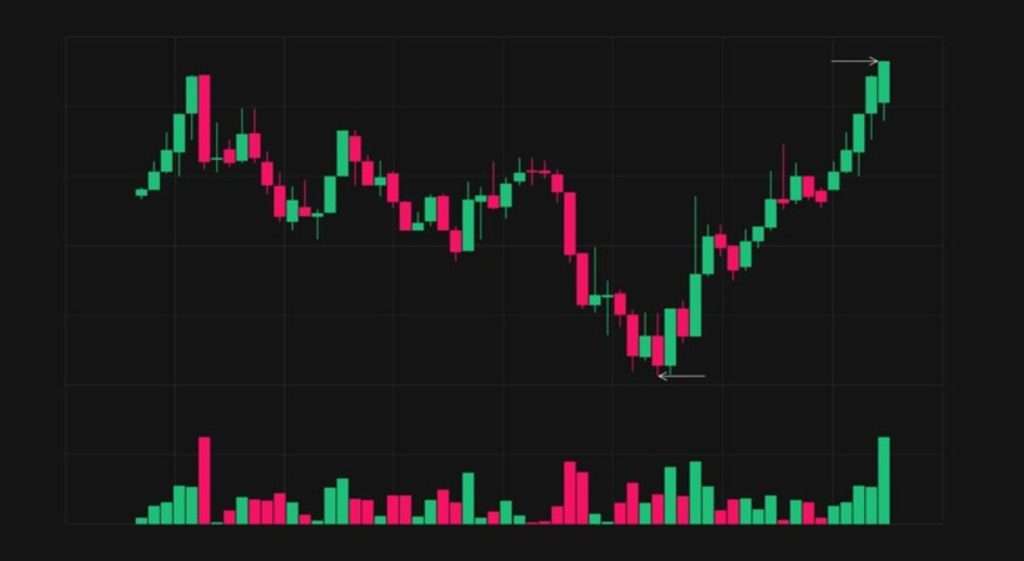Volume is one of the most important information that can be used to make winning trades. The idea behind volume trading strategy is that the market is controlled by major players. The players have billions in assets, infrastructure, algorithms, trading experts and can hence easily move the market. Not to be a downer but the 10 pips you trade have no significant effect on the market. However, so much money can be a problem. It’s not as if these companies can buy 100,000 lots at once. The companies need to enter their positions slowly and unnoticed. Therefore, they set many small positions and drive the market towards a certain direction, where their trades actualize and they get big wins.
In this article, I am going to share with you some tips on how to grow your Forex account using Volume trading strategy.
Learn more about price action trading strategies
Table of Contents
How to Grow Your Forex Account with Volume Trading Strategy
Volume Profile Trading Setups
Here are the trading setups that I use to trade and grow my account faster. I must wait for these trading setups to enter a position. The strategies can be used in any timeframe. Personally, I use the 30 minute chart for intra-trading and the 240 minute or daily timeframe for swing trading.
Strategy 1: Volume Accumulation Setup
The big players moving the market build up their trading positions using sideways price action. Sideways price action is when the market seems to be least volatile, it is neither in a downward trend or upward trend. These big companies set their positions in sideways price action to accumulate volume after which they initiate aggressive buying or selling to move the market in a particular direction. consequently, the companies move the price in the direction where they set their positions.
That being said, you know that when sideways price action is followed by an uptrend, it means the big players placed long positions in the price channel. Inversely, a sideways price channel followed by a strong downtrend means that there are strong sellers entering short positions in the price channel.
Now, not every sideways price action has some strong buyers or sellers, sometimes the market is just highly non-volatile. So, how do we know that there are some strong buyers/sellers operating the sideways price channel? That is where volume indicators like Accumulation-Distribution, On Balance Volume (OBV) and Volume Oscillator (VO) comes in.
Because we need to establish those points in the market where most positions are accumulated. Once we establish those points, we have to wait for the price to return to those points before making an entry. For instance, for a short position, mark where the volume was highest in the sideways price movement, then wait for the prices to return to that level to enter a short position.
The reasoning behind this setup is that strong buyers/sellers are more likely to defend their positions and interests. So when the price returns to the volume accumulation area, the strong buyers/sellers will fight to defend their positions. Therefore, strong buyers will start aggressively buying to drive the prices back up while strong sellers start aggressively selling to make the downtrend continues. Furthermore, if it’s the big players who are moving the market, why would you want to pick up a fight with them? It’s a losing battle because they have the capacity and resources. Also, the trend is your friend, follow the trend.
Strategy 2: Trend Setup with volume clusters
I use this strategy when there is a strong trend. A strong trend shows that there are either aggressive sellers or buyers. The strong trend means that the price is moving too fast making it hard for institutions to enter positions at that point. However, there are instances within a trend where prices slow down, allowing participants to add some positions. Such areas within a strong trend are called volume clusters. A volume cluster works well if it occurs within a trend and the trend continues after it forms. If it happens that way, it could be an indication that aggressive market participants were creating their positions.
A volume cluster shows the area where volumes were accumulating and also the place where strong buyers/sellers were initiating the trend.
To use the trend set up, mark the point where the volume was heaviest in the volume cluster and wait for the prices to return to that level. When the price return to that level, enter your position in the direction of the market. If it is an upward market, enter a long position without waiting for any sort of confirmation. This setup works when resistance becomes support and vice versa.
Strategy 3: Rejection Setup
To use this strategy, you will first have to find an area of strong rejection then apply a volume profile to analyze this area. A strong rejection area can be identified by a strong pin bar appearing at a swing point. Find out other reversal candlestick formations that indicate strong rejection.
In an upward trend, I look out for selling activity followed by sudden trend reversal and consequent strong selling activity. For a downtrend, I look for buying activity followed by a sudden trend reversal followed by strong selling activity.
A price reversal indicates that either strong buyers or sellers strongly rejected a price level. In this setup, I look for the place where there was the most volume in the rejection area. The level with the most volume within the rejection area shows the level where the counterparty was most aggressive.
Once you mark the point where volumes were the most in the rejection zone, wait for the prices to return to this level and enter your position anticipating a reversal. The reason is that the price level is likely to be rejected by the strong players and the trend reversed. Therefore, if there is a rejection of higher prices, I set up a short position.
Disclaimer
Deriv offers complex derivatives, such as options and contracts for difference (“CFDs”). These products may not be suitable for all clients, and trading them puts you at risk. Please make sure that you understand the following risks before trading Deriv products: a) you may lose some or all of the money you invest in the trade, b) if your trade involves currency conversion, exchange rates will affect your profit and loss. You should never trade with borrowed money or with money that you cannot afford to lose.

